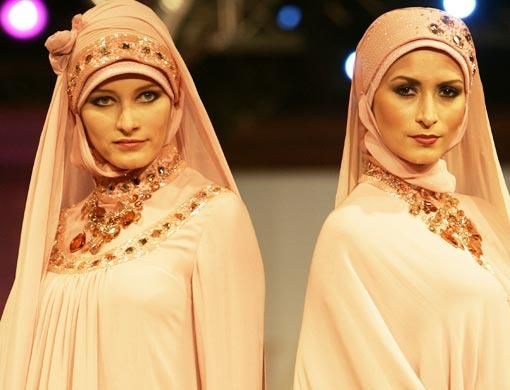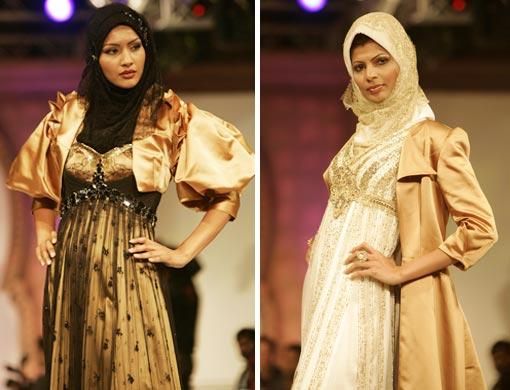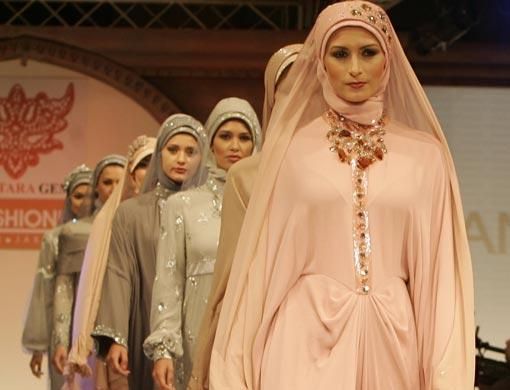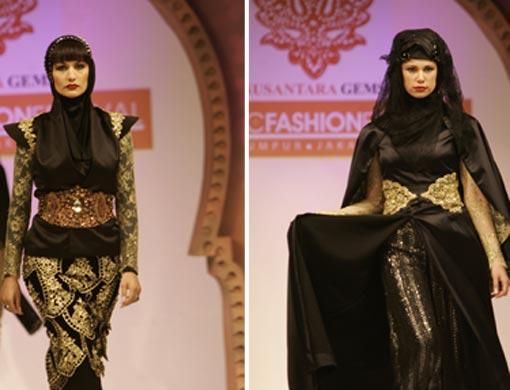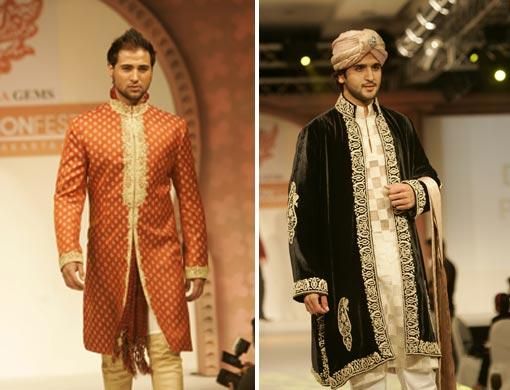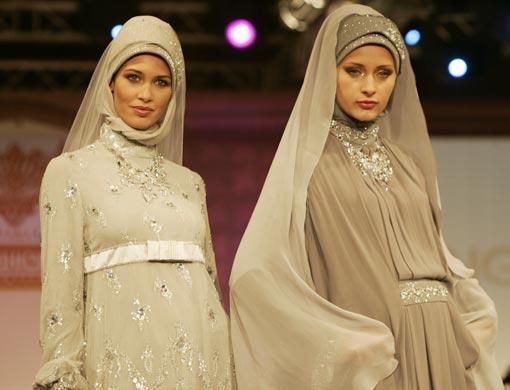Fashion lovers of all nationalities were introduced to a wide variety of trendy Islamic garments at the inaugural Islamic Fashion Festival (IFF) in Dubai.
The event was launched on Sunday with a fashion show and charity gala dinner at the Safinah Ballroom, Jumeirah Beach Hotel, in the presence of the Queen of Malaysia Seri Paduka Baginda Raja Permaisuri Agong Tuanku Nur Zahirah.
The show began with a lively Lebanese folk dance performance followed by an address by Dato Raja Rezza Shah, chairman and founder of the IFF.
"I launched the Kuala Lumpur-Jakarta-Dubai Islamic Fashion Festival to promote Islamic fashion and to establish these cities as the Islamic fashion capitals of the world just as London, Paris, New York and Milan are to European labels."
"Through this event we want to show that Muslims can be stylish without compromising on the modesty requirements of the Islamic dress code. Dubai's presence in the IFF indicates that we are serious about bringing our local designers to the global stage and creating an economically viable platform to support the growth of this genre of fashion," he said.
Spreading wings
Yang Amat Berbahagia Datin Paduka Seri Rosmah Mansor, wife of the Deputy Prime Minister of Malaysia and patron of the IFF, also addressed the audience.
"Since the inception of the IFF in 2006, we have held two successful events in Kuala Lumpur and one in Jakarta. We have now brought it to Dubai because it is time to spread our wings and take Islamic fashion into the mainstream. Our approach is inclusive. We want to bring together isolated fragments of Islamic fashion from different parts of the world to make it one powerful industry. Not only are we catering to Muslim men and women who wish to project their Muslim identity proudly through their attire, but we also want others to see the limitless choices available for dressing fashionably yet modestly," she said.
Ten designers from Malaysia, Indonesia, Pakistan and the UAE showcased their collections at the event. The garments ranged from ethnic wear, stylish gowns, tunics and trousers to abayas, sarongs and Islamic swimwear. Also on display was a wide range of men's wear.
Grand finale
The grand finale featured a Songket presentation by the Tuanku Nur Zahirah Foundation where each designer had created an ensemble using the traditional Malaysian hand- woven brocade fabric called songket. The dancing by the Dubai-based group Ocean Kids in this segment was outstanding.
A gem-encrusted watch provided by Dianoor was auctioned for Dhs 66,000. The money raised was presented to the Al Noor Training Centre for Children With Special Needs.
The event was organised by Emirates Vision and sponsored by Ibex with event partners Paris Gallery. The show was choreographed by Azzy.
THE DESIGNERS AND THEIR COLLECTIONS
From Malaysia
Jovian Mandagie: His collection called La Reine traced the journey of an Arab princess seeking the love of her life in Paris. A blend of Arab culture and French tailoring, the collection included bold and dramatic gowns in black and white decorated with French lace, heavy metal embellishments and Swarovski crystals.
Aktif Bestari: She presented a collection of Islamic swimwear for men, women and children in comfortable spandex lycra, bright colours and a variety of silhouettes.
Dato Tom Abang: Her collection was influenced by the flora and fauna of Borneo and included loose tunics, sarongs, kaftans and long dresses in hand- painted batik.
Radzuan Radziwill: He unveiled a collection of soft romantic gowns in pastel shades of powder pink, baby blue, gold and white. Called True Romance, the collection featured lavish texturing, sequins and floral embroidery.
From Indonesia
Itang Yunasz: His line titled Mukena - Spiritual Beauty comprised a range of black satin and lace abayas and praying veils or Mukena. He also showed a romantic line of embroidered and crystal-studded evening gowns, layered tunics and loose trousers in pastel colours.
Ghea Panggabea: Titled Eastern Treasure, her collection was inspired by the heritage of Indonesia, silhouettes from the Middle East and the colours of Middle Eastern semi precious stones such as pyrus, turquoise and coral.
Adjie Notonegoro: Titled Fatamorgana, which means illusion, the collection was inspired by the desert and the illusion of sparkle one sees in the sand. The gowns and kaftans in deep jewel tones were embellished with big bows, gold embroidery, sequins and lace. Interesting prints, innovative sleeves, empire-line cuts and a variety of fancy turbans presented a unique perspective of Islamic fashion.
From Pakistan
Deepak Perwani: His collection for men was inspired by the Mughal era. The sherwanis, kurtas, jackets, shalwars, trousers and turbans were decorated with designs based on 12th century Islamic tiles and the silhouettes reflected the future of Islamic fashion. The designer had used rich velvet and brocades and a palette of black, red and blue.
From the UAE
Ameera: She presented a collection of velvet, chiffon and dantel abayas with trendy cuts and colourful embroidery, beadwork and crystals.
Shabana Asif : She showcased a rich and luxurious collection of beautifully embellished abayas in black and gold, and a vibrant range of jellabiyas with impressive construction, draping and pleating details.


